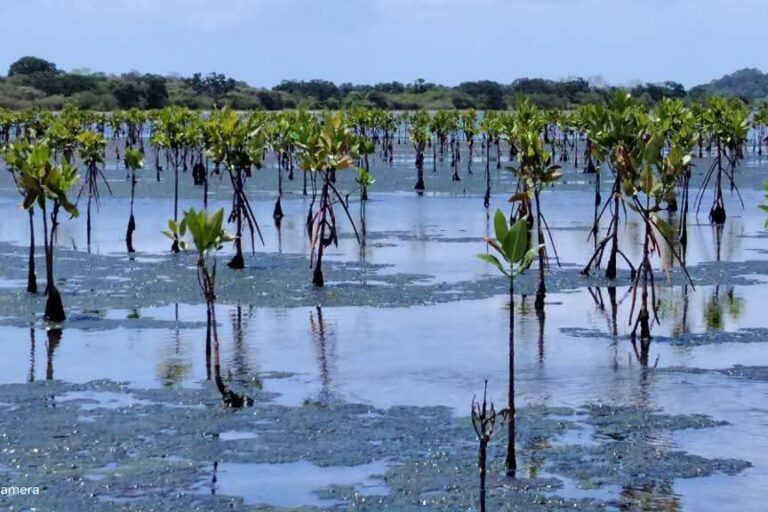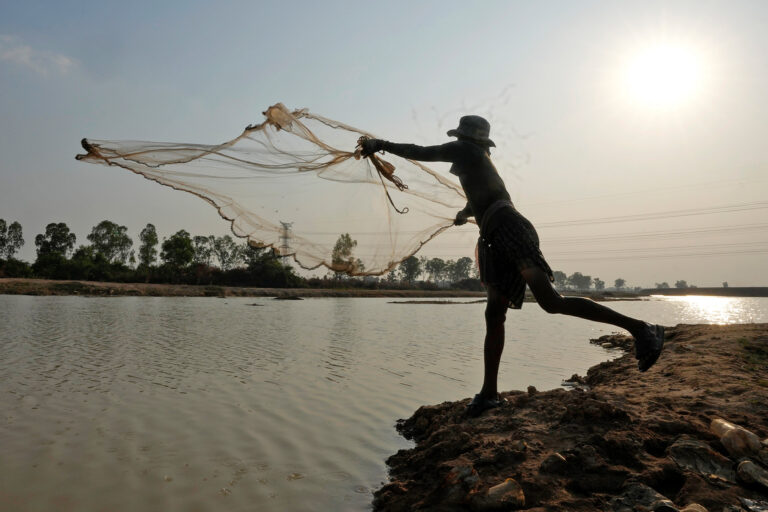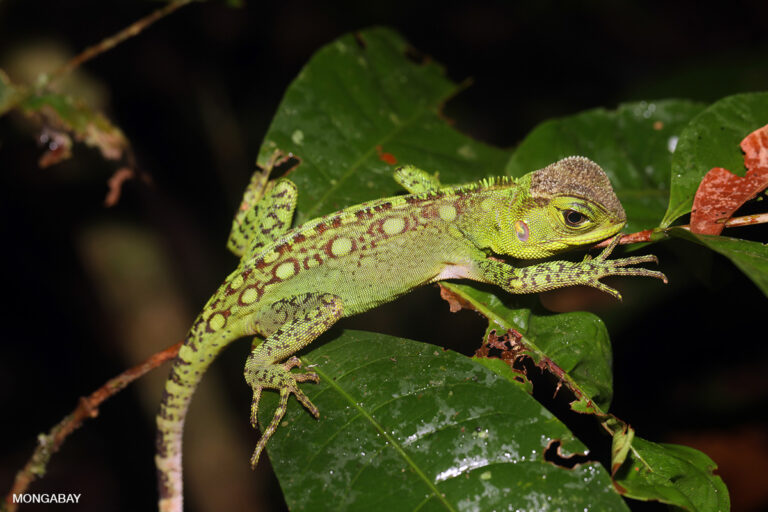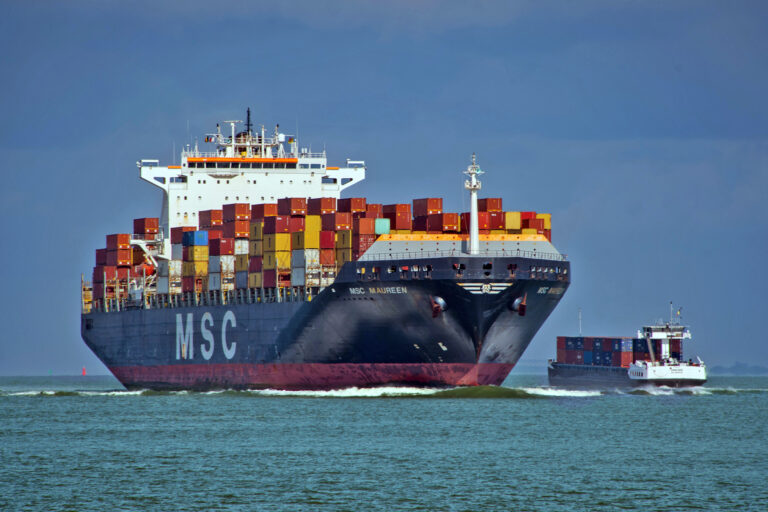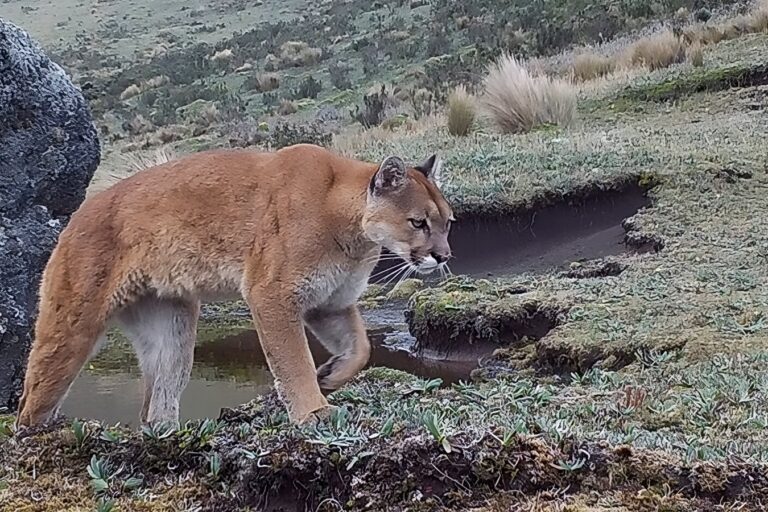- After training as a traditional hunter and fisherman in his village in Palau as a boy, Noah Idechong has since become a “bit of a legend” in Pacific marine conservation.
- He has been a government official, an activist, a politician, a legislator, and the founder of a domestic conservation NGO. Currently, he’s the executive director for Micronesia and Polynesia at the international conservation NGO The Nature Conservancy.
- In all of these roles, Idechong has focused on one main thing: championing the traditional systems the communities of Palau employ to protect and conserve the archipelago’s rich marine biodiversity and domestic fisheries.
- Today, he’s applying that ethos at a regional scale as he helps build more sustainable regional tuna fisheries that benefit the Pacific island nations in whose waters the tuna swim, rather than foreign fishing enterprises.
There’s no one way to describe Noah Idechong.
Born in the small Pacific island country of Palau, Idechong has donned different hats over the past 40 years. He’s been a government official, an activist, a politician, a legislator, and the founder of a domestic conservation NGO. Currently, he’s the executive director for Micronesia and Polynesia at the international conservation NGO The Nature Conservancy. In all of these roles, Idechong has focused on one main thing: championing the traditional systems the communities of Palau employ to protect and conserve the archipelago’s rich marine biodiversity and domestic fisheries.
Idechong’s list of achievements is long. Early in his career, for example, he helped reinstate a traditional system of fishing closures, locally known as bul, to reinvigorate declining fish stocks. For this he was awarded a 1995 Goldman Environmental Prize. He then worked with the fishermen to frame a law that put restrictions on certain destructive fishing practices. As a member of congress, he conceived the Palau Protected Areas Network Act, which offered a framework for communities to designate and manage protected areas along with government. He helped design a sustainable funding mechanism to ensure that tourists who visit Palau pay a “green” fee that communities can use to manage protected areas. And in his current role, he’s helping build more sustainable regional tuna fisheries that benefit the Pacific island nations in whose waters the tuna swim, rather than foreign fishing enterprises.
At a panel on Indigenous-led conservation at the Our Oceans 2022 Conference held in Palau on April 13, Idechong was introduced as a “bit of a legend.” Yet he doesn’t see himself as a specialist of any kind. “I’m a trained hunter and fisherman. That’s all I know,” he said at the panel.

Idechong doesn’t have any formal degree in conservation science. Nor did he grow up wanting to be a marine conservationist or activist, he told Mongabay in an interview two days before the conference panel. What he did have was deep knowledge of local ecosystems that he gained from his father and other fishermen and hunters while growing up; an unwavering connection with Palau and the surrounding seas; and the ability, born of kinship, to keenly listen to the Palauan communities.
“I’ve kind of trained to figure out how to move the voices and actions all the way to the top,” Idechong said at the panel. “It took more than 40 years of my life. Today we don’t have 40 years. We have limited time. The journey I went through started with my knowledge and my connection with the elders and the traditional fishermen. Sharing the concerns they have, bringing what I know to them, and helping them go through a thinking process of solutions … What we did back then was to start with our traditional systems because we know that. We already know that. Science and Western things take years to do, and by the time we do that, maybe the fish will be no more.”
Mongabay spoke with Noah Idechong about his work with local communities to protect Palau’s marine environment and how he applies traditional environmental knowledge and management systems to the big, thorny problems of our day. The interview has been edited for length and clarity.

Mongabay: Could you start by telling me about the beginning of your journey? Where did you grow up and what led you to become a conservationist?
Noah Idechong: I was born in Palau in a village called Ngiwal. I grew up there in the early ’50s where I went to elementary school for eight years. This period was right after the war and Palau had gone back to subsistence living. So, I grew up at a time when everyone was poor. There was no industry; the Japanese had gone and Palau was littered with all of the war damages. All boys in Palau were being trained to become fishermen or hunters. And I was too.
My father would make me wake up at 4 in the morning, we would walk to the beach, and he would tell me, “Don’t say anything, just listen, just listen.” He would point out the sounds of the wings of bats flying; the sound of seabirds going out to fish early in the morning. We would hear the owls. We would take in all the smells — almond trees that the fruit bats would be feeding on, or the smell of flowering trees nearby. He would ask me to look at the morning stars and what they meant at that particular time of the year. So I had to pay attention to all these sounds, sights and smells all the way to the beach. At the beach, we would walk together to the sea, until the water came to my knee and my father would ask me to feel the water temperature, feel when the current is hitting my legs. He would also ask me to listen to the sound of waves breaking on the reefs, to look at the beach and see where we are and where the waves hit the beach — that, he would say, would tell you how big the waves are, where the current is. He would teach me to use these cues to understand where to fish and what to fish.
It was only when I turned 11 that I was allowed to go alone and spearfish. After a while, he let me go fish and learn from expert fishermen with different skills, trapping, spearfishing, night fishing with torches from rafts. Then, he arranged for me to go hunting with village hunters, starting as a bag carrier. I would go with them to hunt wild pigeons, wild chickens and wild pigs to eat, and the hunters would sell the pigeons. So throughout my elementary school years, I gained experience as a fisherman and a hunter. That was part of my growing up in the village.
Then I went to Koror, where I attended Palau High School for three years. After that I went to the U.S. to finish my high school as an exchange student. There, I asked to be placed in a farm because I didn’t want to be in a big city. I wanted to live on a farm, I wanted to be close to the water. So, I went to Minnesota to a place called Pine City where there are lakes and farms everywhere. I was about 18 years old then. I finished that and went to college in Honolulu, Hawai‘i, to study liberal arts. One time, when I came home to see my father for my vacation, I started to listen to the job announcements on public radio and all they were looking for were people with a business administration degree. So, when I went back to Hawai‘i, I decided to change my focus to business administration. And I ended up doing five years of that.
When I finished, I had a job in Palau to teach at Palau High School. But I was a miserable teacher. The Trust Territory government at that time was looking for an administration person to deal with the aquaculture program at the Micronesia Mariculture Demonstration Centre, which was based in Palau. [Editor’s note: From 1947 to 1994, the islands that are now part of Palau, the Northern Mariana Islands, the Marshall Islands, and the Federated States of Micronesia were grouped by the United Nations into the Trust Territory of the Pacific Islands and administered by the U.S.] When they approached me, I agreed because I had a background in administration and I knew I wasn’t enjoying teaching. So I joined the Trust Territory government in their aquaculture program in 1978. I was in charge of administration, and I ended up doing a lot of paperwork. We also had this research station, where some scientists would come and conduct research, and they would ask me questions about different fish, where they occur, and about Palau, and I realized that I have all this knowledge that could be useful. We hit it off and I knew I wanted to be out there doing things with my local knowledge. That’s how I decided I wanted to move from being an admin person to more of a person who deals with fisheries. That’s how I transitioned to a management role in the government’s fisheries department.
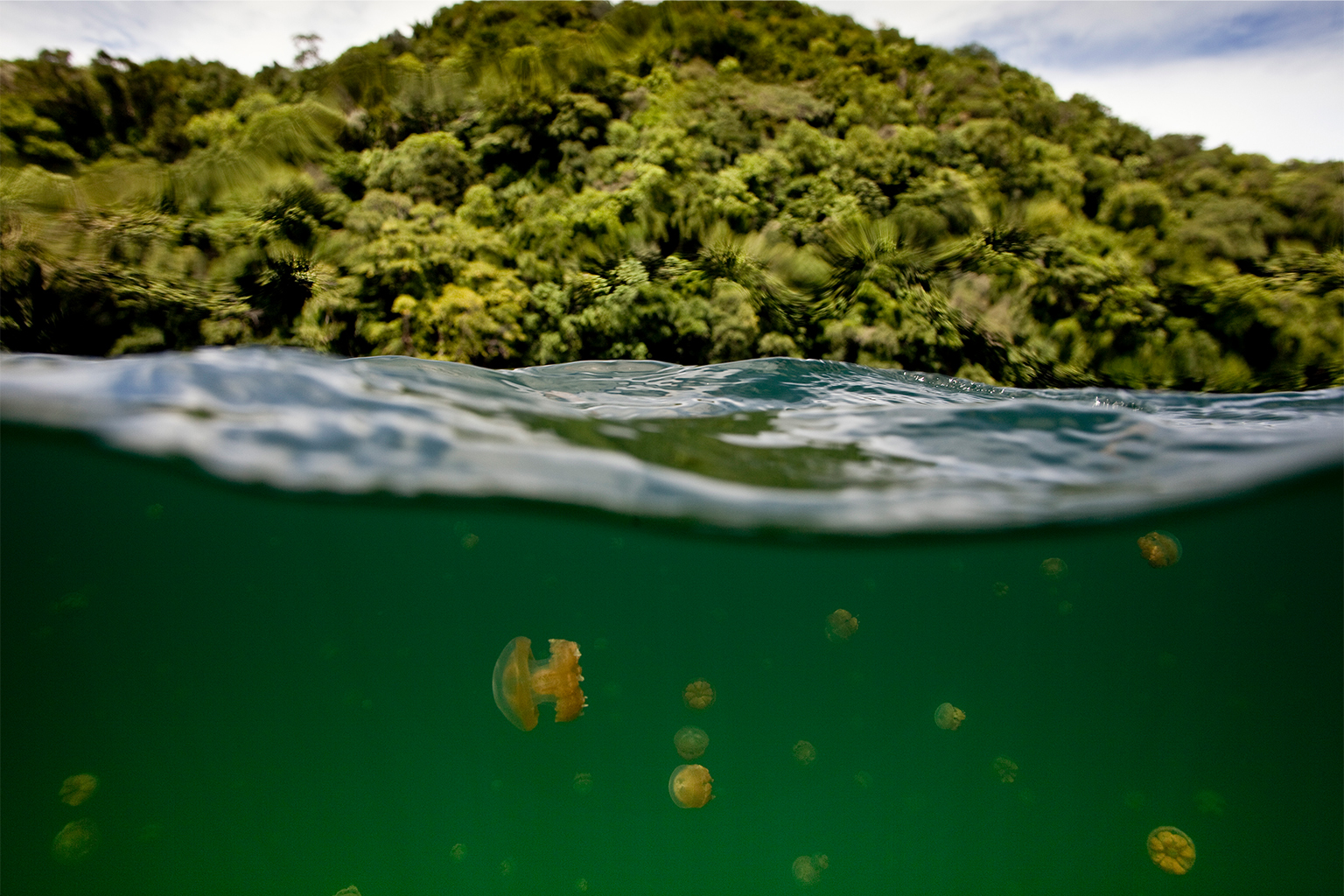

Mongabay: How did you decide you wanted to rely on traditional knowledge for your work in the government?
Noah Idechong: As part of the government, I was in charge of managing our natural resources. But I knew that the way the government worked then was very slow. We also didn’t have many people who could do the science. So I thought, why not use local knowledge to protect our resources, until we get the science done. That’s how I started working with the village chiefs and fishermen.
In Palau, fishermen are the most regarded people. You’re not a fisherman just because you’re catching fish. Being a fisherman is having knowledge of everything about the sea. They have the sense of when something is wrong in the sea. It’s not science, but it’s this really close connection with the fish, the sea, the seasons, which makes a person a fisherman.
Mongabay: One of the traditional systems you helped reinstate was the bul. Could you talk about how that happened?
Noah Idechong: Traditionally, in Palau, we’ve had a very restricted use of resources. The chiefs controlled when you can fish, how much you can catch, and where you can fish. The entry and exit points for fishing areas were tightly controlled; effort was controlled; even distribution was controlled. So the system used to be a closed one. But with the erosion of our culture and an influx of a grant from Japan to modernize fishing, which included promoting boats, various fishing gear and economic development, people began fishing anywhere, anytime, encroaching into other communities’ waters. The chiefs got really concerned, and they would complain to me. I told them that while I’m from the government, the government has no money, no resources to protect the resources you want protected. The only way to do it is through a local system.
While there’s been an erosion of our culture, we still had the bul. It’s is an age-old practice, essentially where the harvest of certain resources [plants, animals, fish] is severely restricted for a temporary period of time. The way it works on the fisheries side is that when the fishermen feel something is wrong, maybe there’s an issue with the catch in an area, they consult with the chief of their community, and the chief imposes a bul on a particular resource. It hadn’t been used for fisheries in a very long time, and it hadn’t been used across different communities at the same time. But the system was still being practiced in individual villages for various things — for example, when people are planning a big harvest because they’re having guests, they will put a ban in their private property, so that you don’t harvest whatever it is you need and you wait until there’s enough. The ban is not permanent. It’s to ensure that things come back.
Now, when I started working with the fishermen back in the 1980s, everyone thought that the government had all the power [over decisions on marine resource management]. I had to convince them that the resources are yours, the problems are yours, therefore the solutions must be yours. I made it clear that I would support them, but it would be their decision, not mine. There’s a Palauan proverb that I’ll paraphrase in English: “You search far and wide, only to find what you need in your backyard.” All of these discussions and work with the fishermen, chiefs and government culminated in three things in 1994.
First, the chiefs of the northern villages, reinstated a bul in the spawning aggregation channels in the northern reefs to protect fish stocks. This was the first time where traditional communities came together and made a declaration to protect these channels. Second, I worked with the fishermen and the Congress to frame a law [Palau Marine Protection Act of 1994]. It’s called 4-18, and that law put in a lot of restrictions on fishing practices, including the mesh size for nets, export of certain species, prohibition of the use of certain fishing gear and seasonal closures. A third is the creation of Palau Conservation Society, a local conservation group dedicated to work with communities to support their conservation initiatives. These were all the fishermen’s ideas. There wasn’t much science there apart from common sense.
Essentially, all of it comes to down to this: We wanted the communities to claim back ownership of the resources. That’s key.

Mongabay: How many times or in how many places has a bul been declared since you first started working with the communities? And what do studies show about the effects these bul have had?
Noah Idechong: There [have been] bul or protected areas in all 15 states of Palau that are part of the protected areas network. Eventually, when we had scientific surveys in Palau, these confirmed that the places where the chiefs declared a bul are very important. For example, studies conducted by Palau International Coral Reef Center and available in their website shows differences in fish biomass in protected areas compared to outside. Science confirms that if these places hadn’t been protected then, they would be gone by now.
Mongabay: How important has it been for you to marry scientific evidence with traditional practices in your conservation work?
Noah Idechong: At first, we were relying on traditional knowledge. Then we started using science because it’s more modern and science can add to traditional knowledge. We had surveys in areas that are important, like spawning aggregation sites. It’s not that the scientists brought the questions. It’s the fishermen who asked the scientists to answer questions that would help augment their knowledge.
I’m very selective about the people I bring to the villages. It’s only people I trust, and people who listen rather than just talk about solutions. I look at science as something that augments traditional knowledge; it doesn’t supplant it. Science is just one part of knowledge that needs to be used for decision-making.

Mongabay: You were working with the government for a long time. Why did you start a conservation NGO in 1994?
Noah Idechong: When I was a government manager, I realized that working for the government involved navigating too much bureaucracy, and politics. We didn’t have time to work for the villages and communities. We would go there, then come back at 4:30 p.m. It was a quick in and out. I realized the communities were just tolerating us. With the government I had a job description, I had to do what I was supposed to do. The work I was doing with the communities was outside my role, only because I believed in it.
That’s why with my friends, I founded the Palau Conservation Society in 1994. [Editor’s note: Palau became an independent country the same year.] I led that for six years as the executive director. That allowed us to work with communities very closely. We would get the chiefs’ permission, set up camp in the villages, and talk to the community people for weeks, getting to know what’s going on with the fishermen, the women, the entire community, and what issues and concerns they wanted to bring to the chiefs’ and the government’s attention. My rule has been that when working with communities, we keep all the information we learn confidential because these are privileged information. We facilitate the people to speak to appropriate officials, but we don’t speak for them.
Mongabay: What led you to join Congress after this?
Noah Idechong: In the six years I was leading Palau Conservation Society, many protected areas came up. [Editor’s note: PCS helped communities establish some of the formal marine protected areas.] That gave me a challenge. Who’s going to fund all of the communities’ management activities needed for those protected areas? We are an NGO, we can help fundraise but that’s not sustainable. We need to help government to provide support because that’s the job of the government. They have to do that. It fits with their national and international obligations.
My thinking was, alright, I’ll have to go to Congress, so that I can get money for these communities. But there are so many things like health and education. How do we then get money to the communities? So I conceived of the Palau Protected Areas Network (PAN) Act. [Editor’s note: This established a national framework for governments and local communities to designate and manage marine and terrestrial protected areas.] And then we designed a sustainable funding mechanism, PANFund, where the funds would come from tourists. Tourists who visit Palau pay a “green” fee that is used by a community whenever they need funding to support their management activities. In return, tourists would benefit from a good environment.

Mongabay: What’s the money used for?
Noah Idechong: It’s for management of sites that meet certain conservation criteria. Basically these are sites that the communities wanted to protect before, such as spawning areas, and now the science says, yep, those are good. So there’s a process to designate them as protected areas. There’s a criteria and a process that you go through, and if you qualify, then you get the money. This money would pay for staff, the managers, equipment, and everything you need for managing the sites.
Mongabay: Why did you and the communities decide to create formal marine protected areas instead of continuing with the traditional, temporary bul?
Noah Idechong: The main reason for creating permanent protected areas was the heavy burden being placed on areas year-round by expanding populations. So, critical areas needed year-round protection. The other reason is to have legal recognition to allow for strengthened enforcement and to have funding support from government institutions.
Mongabay: When you were in Congress, was it hard to make politicians value traditional knowledge and systems?
Noah Idechong: The main issue I see is there’s a lot of conflict between traditional laws and our central legal system that are hard to reconcile, let alone unravel. That’s the problem. When I worked on this protected area network and this fund, there was a lot of opposition because many people didn’t understand it. But when the money started flowing, they got on board. Sometimes, you need someone to package things together and convince people.
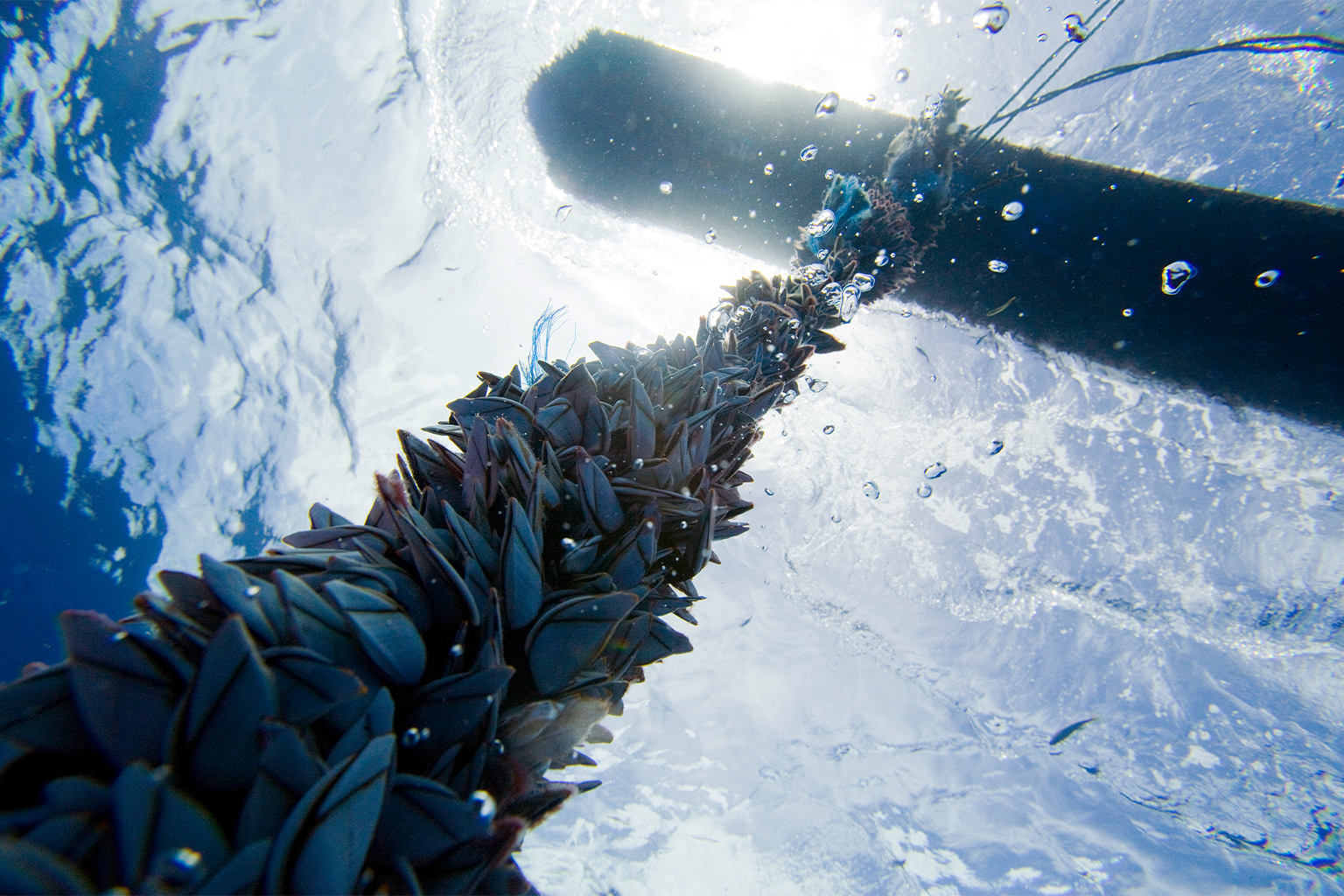
Mongabay: You’ve been a government program administrator, a government resource manager, founder of a national NGO, a member of Congress, a legislator, and now the executive director of the Micronesia and Polynesia chapter of an international NGO, The Nature Conservancy. How have the roles shaped you?
Noah Idechong: Every aspect of my of work life has been shaped by cross-mentorship with people I love and share deep mutual trust and respect with — from fishermen and traditional leaders to great scientists, resource managers and people from regional and international organizations whose work went far beyond their organizational bureaucracies and inflexible processes.
The most fun time of my life was working with the communities. That’s not even work. Then, the six years I spent leading the Palau Conservation Society were pretty much the same. My time in Congress was the hardest part of my life. I spent 12 years there, and I was frankly miserable. My health was not good because I’m not a politician. I’m a man of few words but when I open my mouth, I speak my mind. In Congress, there are 16 of us [in the House of Delegates] with different understanding and perspectives on current issues, and there I had to bite my tongue and keep my mouth shut so as to keep focus on my agenda.
I chose to work with The Nature Conservancy because it shares my values and I have been a partner to them for 32 years. I started working with them because of the Pacific tuna fishery. It’s politically and economically important for our island.
There were many issues with the tuna fisheries. Tuna is harvested mainly by distant-water fishing nations, through access fees, where the fishing nations and industries get the lion’s share of the profits. This is done through vessels misreporting their catch or entering illegally and unmonitored. Catches of endangered or threatened species including sharks, turtles, rays and seabirds are taken and not reported. Our team wanted to see if we could make the fishery much more transparent and to seek ways to support Pacific islanders getting more benefits from the fishery. Our electronic monitoring project has shed light into the problems of unethical work practices by vessels. We also went to Alaska, where we understood the model adopted by the Native Alaskans, and now we’re applying that to our programs in Marshall Islands and FSM [Federated States of Micronesia]. Our support to Marshall Islands’ innovative industry, called Pacific Island Tuna, has the potential to change the industry business models. We’ve made a lot of progress from 2015 to now.
What I really want to do next is to see how we can scale our practices from country level to regional level — how can we have Palau, FSM, Marshall Islands, Kiribati, Nauru, all of these islands, work together, and not get divided by all of these NGOs that try to enforce their own agenda. That’s the hardest part.
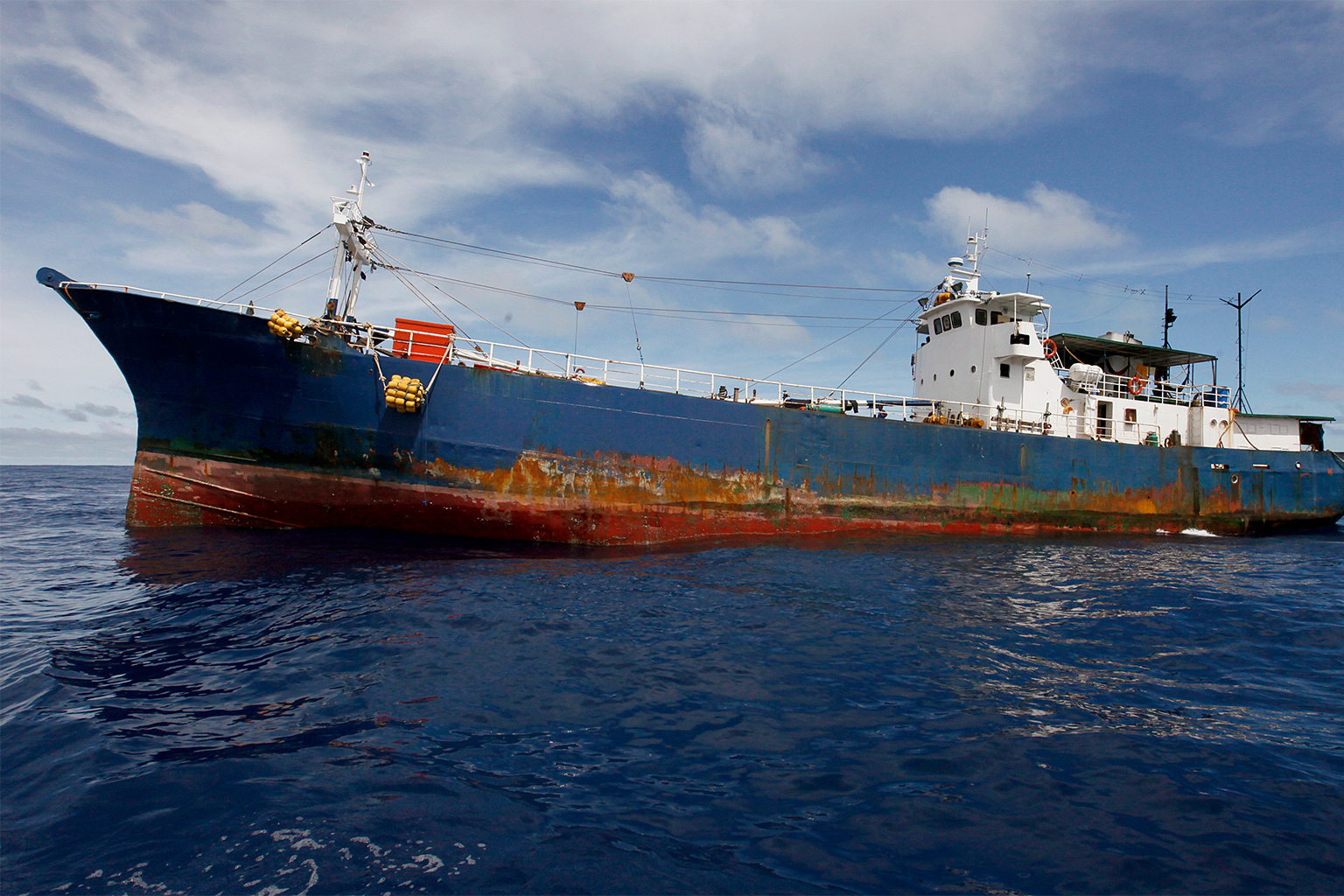
Mongabay: Can traditional conservation practices and philosophies be applied across vast scales and involve multiple stubborn international actors?
Noah Idechong: That’s the question: how do we do it? The way I think about it is, first, you begin to treat these Pacific island nations as resource owners. They own the resources, they should own the problems and the solutions. We want to live in our homes, raise family, educate our children, raise our standard of living. We do have aspirations, but we are often treated as if our opinions do not matter.
Let’s start by building trust and respect, and having candid conversations with the nations. We are sovereign nations. We do need scientific help and technical support. We need capacity development and funds. But we are people, so first, listen to us, listen to what we want. Don’t put us in boxes so that it’s easy for you to dole out peanuts. Unfortunately, we often get overwhelmed by agendas set by NGOs and all [this] U.N. and bilateral stuff.
There is too much effort spent in talking the best talks, and not enough effort in walking those talks. At national levels, we need to identify, align and reach consensus on our priorities and needs, right from communities and local governments to the national levels. Then, we can begin scaling to regional levels. We need to communicate clearly and confidently.
Mongabay: There’s a quote by you: “Conservation work in the Pacific is not new. Build on the customs and traditions that are already there. Don’t try to replace it with something new.” There are many modern problems plaguing our ocean today like ocean pollution and climate change. In what ways do you think traditional conservation practices could help tackle some of these problems?
Noah Idechong: Quite frankly, if you live on an island, it’s hard to believe there are serious efforts to address root causes of ocean problems. As we speak, the sea is rising, the ocean is becoming warm, storms are getting severe, shores are eroding, weather is becoming unpredictable, corals are dying. There are really generous people with good intentions who provide funding for conservation outcomes on the ground, but there could be better ways to get money to the ground where they are most needed, rather than money that’s spent on meetings, bureaucratic costs, reports and on keeping processes that have little relevance to systems on the ground.
At the same time, I’ve been telling our local communities that we have to do everything we can here. For example, when we had the coral bleaching way back in 1997, 1998, the chiefs said, “Hey Noah, why are we trying to conserve these corals when the impacts are coming from somewhere else, killing 40% of our corals?” I said, there’s nothing we can do there, but there’s something we can do here. Let’s make sure our president speaks to them and makes noise, but we also have to clean up our backyard. Let’s make sure everything we can do here, we do it. So we don’t become hypocritical and look like we only make noise to get money. For me, rights and responsibilities go together.

Mongabay: You’re going to be part of a panel on Indigenous-led conservation at the Our Oceans 2022 Conference being held in Palau. Is there a particular message you want to get through to people?
Noah Idechong: I wasn’t expecting to speak because in a panel it’s really hard to get your message across. Later today I’m hoping to speak with the traditional leaders of Palau and I’m going to ask them what kind of message do they want to bring to the conference.
It’s good to have this big attention here, but after they all leave, then what? Then they’ll do another conference and we’ll get left behind. So it’s our responsibility. Let them come, let them go, but let’s do what we have to do because it’s our place. You want to raise your own baby. You can ask for help, but you take care of your own baby.
Watch Noah Idechong deliver a message from the chairman of Palau’s Council of Chiefs, an advisory body to the president, Paramount Chief Reklai Raphael Bao Ngirmang. Idechong spoke at a panel on Indigenous-led conservation at the Our Oceans 2022 Conference on April 13, two days after he took part in this interview.
Banner image: Fishers in a small boat in Koror, Palau. Image by sandwich via Flickr (CC BY-NC-ND 2.0).
FEEDBACK: Use this form to send a message to the editor of this post. If you want to post a public comment, you can do that at the bottom of the page.








